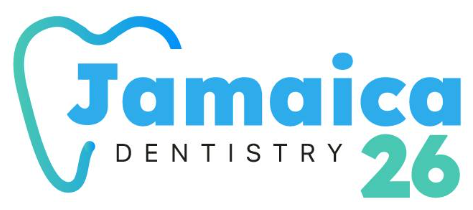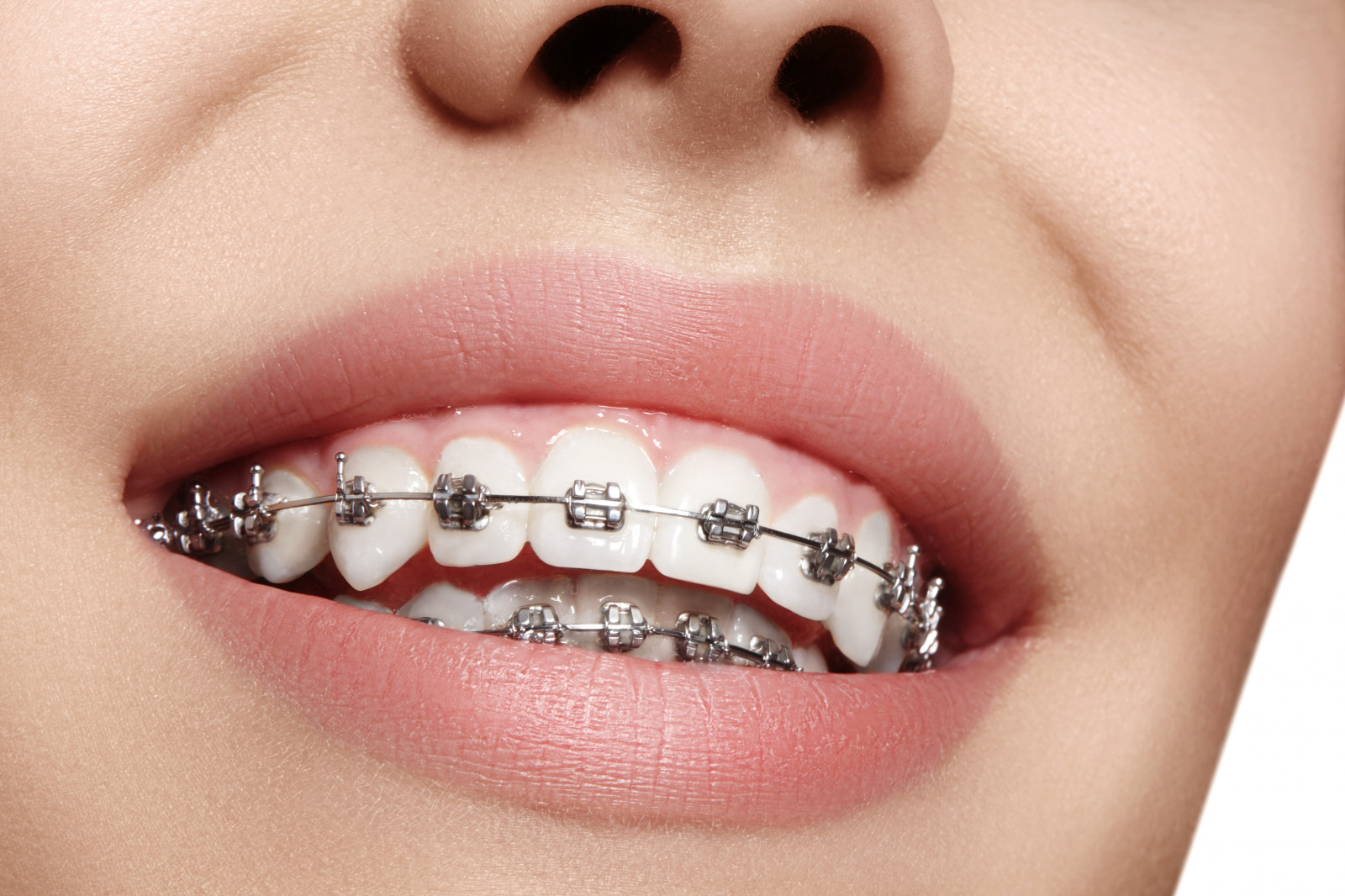About 20% of orthodontic patients are adults, and more than 4 million Americans wear braces. They do much more than the chewing function, and teeth are responsible for facial structure, important elements of speech and smiles. Crooked and misaligned teeth affect all these functions, and that is where orthodontics comes in. It’s not just about aligning the teeth and making them beautiful; it is about making you healthier.
At Jamaica 26 Orthodontics, we don’t just straighten teeth—we create healthier, more confident smiles.
Our Orthodontic Services
Here are the key services we offer to help you achieve the perfect smile:
Traditional Metal Braces
Metal braces have been a trusted orthodontic solution for years. Made from durable stainless steel, they consist of brackets attached to each tooth, connected by a wire that is periodically adjusted to shift your teeth.
Who benefits most? Teens and children are the most benefited by the traditional braces because their growing jaws are comfortable to the traditional braces. Metal braces are lighter, smaller and more comfortable in the comparison to previous days.
Why Choose Metal Braces?
- Highly durable
- Cost-effective
- Great for severe misalignments
Invisalign (Clear Aligners)
It is a good option to choose by people that prefer discreet orthodontics. These removable and clear aligners gradually shift your teeth into place with a new set of aligners provided every two weeks.
Who benefits most? Adults and teens are looking for an almost invisible treatment. Since the aligners are removable, they’re also easier to clean and maintain.
Benefits of Invisalign:
- Virtually invisible
- Comfortable and removable
- Minimal dental consultations required
Clear Braces (Ceramic Braces)
Metal braces are only one of the aesthetic choices. They have ceramic brackets that match the color of your teeth and allow them not to appear too obvious.
Who benefits most? Teens and adults who prefer a subtle treatment option. However, at the same time, they may not be as strong as classic metal bracers. They still offer more effective treatment for moderate alignment problems.
Why Choose Clear Braces?
- Discreet appearance
- Reliable results
- Suitable for addressing mild to moderate concerns
Early Orthodontic Treatment
Initially, orthodontic treatment is early, around age 7. It can prevent more critical problems later on. Early intervention can guide jaw growth. It can create space for adult teeth and address harmful habits such as thumb sucking.
Why Start Early?
- Prevents bigger issues later
- Saves money in the long run
- Promotes healthy facial development
Retainers
Once your aligners and braces have worked their magic, retainers step in to keep your teeth in place. Your teeth could shift back to their original positions without retainers.
Types of Retainers:
Fixed retainers
It is a type of permanent dental appliance. It is used to maintain the position of your teeth after orthodontic treatment.
Removable retainers
It is a dental appliance. It is designed to maintain the alignment of your teeth after orthodontic treatment, like clear aligners and braces.
Why Retainers Matter:
- Maintain alignment
- Prevent teeth from shifting
- Assure lasting outcomes
Emergency Orthodontic Care
Life happens, or sometimes braces break and wires pop out, as well as discomfort strikes unexpectedly. Our emergency orthodontic care ensures fast relief for any issues that may arise during your treatment.
Common Emergencies:
- Broken brackets
- Loose or poking wires
- Lost or damaged aligners
Post-Orthodontic Care
It is also known as retention. It is the crucial phase after your braces and other orthodontic appliances are removed. Its major objective is to prevent your teeth from shifting back to their original and misaligned positions.
Why Post-Orthodontic Care Matters:
- Cultivates green outcomes
- Keeps your teeth healthy
- Prevents future complications
Orthodontics Advantages
The advantages of orthodontics to enhancing your smile and happiness. It has several positive effects on your health.
Enhanced Aesthetics: A smile enhances your confidence and facial features.
Better Oral Function: Resolving bite problems facilitates chewing and speaking.
Reduced Dental Problems: Straight teeth are very easy to clean. It also reduces the risk of decay and gum disease.
Jaw Alignment: Orthodontic treatment can relieve jaw pain. It also reduces TMJ disorders and headaches.
Easier Cleaning: Straight teeth are very easy to brush and floss more efficiently.
Long-Term Savings: spending money today on orthodontic treatment. It can help you avoid future costly dental procedures.
Why Choose Jamaica 26 Orthodontics?
At Jamaica 26 Orthodontics, we focus on just fixing teeth. We provide a great experience from consultation to post-care. We listen to your needs, explain every step of the process, and also deliver the outcomes that leave you smiling.
Common Orthodontic Concerns
- Crowded Teeth: It might make cleaning more challenging. Crowded teeth can cause discomfort.
- Overbite: When the front teeth position themselves too far upwards. It may result in tooth damage or jaw pain.
- Underbite: Your chewing and facial profile may be impacted when your lower teeth erupt. Rearranging the jaw as well as the teeth is how treatment fixes this.
- Gaps: Braces and aligners are used to close gaps. These can used to close gaps between the teeth for either functional purposes and cosmetic.
What Happens During Treatment?
- First Visit: We examine teeth and take X-rays, and craft a personalized treatment plan.
- Active Treatment: Aligners and braces assist in moving your teeth into place. With the modifications performed every 4-6 weeks.
- Retention: After the treatment, retainers keep your teeth in place to assure long term outcomes.
Tips for Orthodontic Success
To get the best results during treatment, heed these suggestions.
- Brush and Floss Daily: Cleaning around braces is made easier with the best brushes and flossers.
- Avoid Hard or Sticky Foods: These may harm aligners or braces.
- Wear Retainers Consistently: To maintain the ideal shape of your smile after your treatment use your retainer.
- Attend Regular Appointments: Consistent dental visits to identify issues early.
FAQs
What age is best for braces?
Ten to fourteen years old is an appropriate age range for braces. Throughout, people of all ages can receive treatment.
How long does treatment take?
The treatments typically last 12 to 24 months. Based on how critical the disease.
Are braces painful?
Mostly, you may feel some pain after the adjustments. But they are temporary.
Am I allowed to eat normally with braces?
All types of foods are acceptable. But those that are crunchy and sticky are not advisable for people with braces.
How frequently should I come for a visit during treatment?
Typically, routine examinations are planned every four to six weeks.

